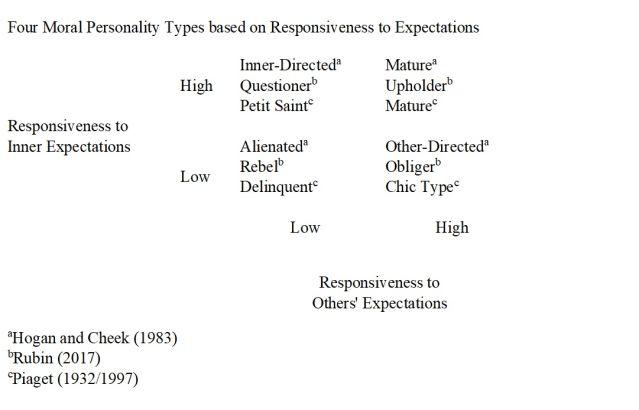FORGIVENESS-
The Power of Forgiveness.
New evidence from a randomized trial.
Reviewed by Jessica Schrader
KEY POINTS-
Forgiveness can be understood as replacing ill will towards an offender with goodwill.
Forgiveness is different from excusing, reconciling, or foregoing justice.
A randomized trial of a forgiveness workbook indicates beneficial effects on mental health and flourishing.
We have all been hurt by others. Sometimes those wounds last for a long time.
It can be difficult to know how to deal with such hurts, or with those who have inflicted them. One approach is to bury and suppress the wounds, but often they then remain with us and re-emerge. Another approach is to let the wounds fester, to ruminate upon them and upon anger, and possibly seek revenge. Sometimes that revenge may help pacify one’s outrage; at other times it may not. An alternative approach to dealing with the hurts we all experience is forgiveness.
We might define “forgiveness” as the replacement of ill will towards an offender with goodwill. Conceived as such, forgiveness is distinct from excusing or condoning the action; it is distinct from reconciliation; and it does not require foregoing justice. Forgiveness does not entail ignoring issues of responsibility and accountability. One can forgive an offender and hope for his or her ultimate good, while also pursuing a just outcome. One can also forgive an offender without necessarily seeking a restored relationship. This point is especially important in cases, say, of repeated violence or abuse, wherein the ending of the relationship may be best for the victim and offender alike. Likewise, because forgiveness and reconciliation are not identical, one can also forgive even if the offender has passed away. In conflicts, often both parties are hurt, and forgiveness can be helpful in both directions.
Prior research on forgiveness has included randomized trials of forgiveness interventions and longitudinal analyses of observational data. This research has indicated that forgiveness lowers depression and anxiety. Forgiveness can, over time, help free the victim from the hurt, rumination, and suppression, and from the offender. And again, one can pursue forgiveness and justice simultaneously.
Most prior forgiveness interventions have required many sessions with a trained therapist. In our most recent randomized trial study, we have examined whether the past 30 years of work in clinical psychology on forgiveness could be distilled into a self-guided workbook that could be effective at promoting forgiveness and improving mental health. If so, given the ease of dissemination of such workbooks, the public health consequences could be profound.
REACH Forgiveness Model
The workbook we studied employed Everett Worthington’s REACH model of forgiveness where each letter of REACH stands for a different part of the process:
R: Recall the hurt and let the emotions associated with it surface; do not suppress them.
E: Empathize with the offender, trying to understand their reasons for the action, without condoning the action or invaliding one’s feelings.
A: Altruistic gift; realize that forgiveness is an altruistic gift that can be offered or withheld, and realize also that one has oneself sometimes done wrong and has been forgiven.
C: Commit to forgive, to try to replace ill will with goodwill.
H: Hold on to the forgiveness, realizing that it takes time for emotions to heal and that sometimes the anger will return.
The workbook was developed by selecting the most effective exercises from prior research that could be completed in two to three hours, to help people who want to forgive but were having trouble doing so.
Our Forgiveness Randomized Trial
We carried out a waitlist randomized trial to examine the effectiveness of this forgiveness workbook. The study had about 4,500 participants in five relatively high-conflict countries: Columbia, South Africa, Ukraine, Indonesia, and Hong Kong.
In a waitlist randomized trial design, participants are randomized to receive the intervention either immediately, or after a delay (in this case, two weeks), and then outcomes are measured right before the second group gets the workbook. Given prior research on forgiveness, it seemed unethical to permanently withhold the workbooks from participants in the trial, so a waitlist design seemed best.
Happily, the workbook was indeed effective at increasing forgiveness. Those who received the forgiveness workbook immediately reported experiencing higher levels of forgiveness after two weeks than those who were randomized to delayed receipt. Moreover, there was also evidence from the trial that the forgiveness workbook lowered depressive symptoms and anxiety symptoms, and that it increased hope.
There was also evidence that it increased various aspects of flourishing—happiness, health, meaning, character, relationships, and even a sense of financial security—as assessed by our flourishing measure. The formal paper on our randomized trial is currently under journal peer review, but given the importance of this work, and our upcoming forgiveness conference (described below), we decided to release a pre-print on the study and more details are available here.
Public Health Implications
Given the important effects of forgiveness on mental health and well-being, and the existence of an effectively costless, easily disseminated self-guided forgiveness workbook, forgiveness should arguably be considered a public health issue. The public health impact of a particular exposure or phenomenon is sometimes assessed as a function of how prevalent or common it is and the size of its effects on the outcomes that we care about.
Something that is both common and has large effects on health outcomes will shape population health. On these grounds, forgiveness is important. The experience of being wronged is very common; and forgiveness, which can be fostered by the use of the workbook, can itself improve mental health and well-being.
If the workbooks were disseminated in clinical, school, and workplace settings, and if local, national, and international efforts were made to promote forgiveness and utilize such resources, we argue that more people could forgive and reap the benefits of improved mental health. (The forgiveness workbook can be downloaded here and freely distributed. I have personally used it myself and have found it very helpful.)
Difficult Questions, and Our Conference
There are of course difficult moral questions around forgiveness that are important in their own right, but also important in thinking about forgiveness in the context of public health. Are there limits to forgiveness? What are the moral conditions under which forgiveness might be considered appropriate?
While there is certainly no universal consensus, arguments have been put forward that, provided the victim does not deny the wrong that was done or its implications or deny or suppress feelings about it, forgiveness—understood as replacing ill will towards the offender with goodwill—can always be morally appropriate. Again, forgiveness does not entail foregoing justice, and this distinction is critical especially if forgiveness is promoted in clinical or community settings, and in thinking about the morality of forgiveness.
But what if the wrongdoer does not acknowledge the wrong or does not repent? Forgiveness—understood as replacing ill will towards the offender with goodwill—can still take place. And such forgiveness may still help free the victim from the offender. Conversely, if something you say or do deeply hurts or offends another person, even if you believe you did nothing wrong, it can still be helpful to express sorrow for the other’s pain. In some cases, this itself might facilitate healing and might help the other person to forgive.
These are, however, difficult questions, and to help try to address these, the Human Flourishing Program, in collaboration with Harvard’s Memorial Church, the Making Caring Common Project at the Harvard Graduate School of Education, the Harvard Catholic Forum, the Religion Conflict and Peace Initiative at Harvard Divinity School, and the Templeton World Charity Foundation, are hosting an Interdisciplinary Conference on Forgiveness to bring together scholars and practitioners from psychology, law, peace studies, philosophy, theology, and public health to ponder these and others important and difficult issues surrounding forgiveness. The conference will be held at Harvard University April 21-22, 2023, and is free and open to the public.
Enmity and Love
Forgiveness perhaps also points us towards the need for love within community, and a restoration of love when things have gone wrong. It arguably even points towards a need for a love of one’s enemies, of those who have a settled ill will towards oneself, or those towards whom one is inclined to have settled ill will.
Our society has become increasingly polarized. We will not agree on everything, and those disagreements can be important. And yet, it is important also to recognize the humanity of those we disagree with, to understand those differences, and to work towards finding those aspects of what is good that we can agree on and seek together. We can at the same time seek to correct the other, while seeking to be corrected ourselves.
There is a paradoxical logic of love for one’s enemies, and forgiveness facilitates this logic and love. By replacing ill will towards another with goodwill, forgiveness may prompt prosocial action that may itself propagate, thereby potentially helping to heal division. Love—love for one's enemy—seeks both the good of the other (sometimes including correction), but also, when possible, a desire for reconciliation. Love extends beyond even forgiveness. Our society needs to foster a greater love of neighbor, and love of enemy.
People in many parts of the world right now are observing “Holy Week,” a remembrance of what Christians believe to be the life, death, and resurrection of Jesus Christ. The account given in the Gospel of Luke is that Jesus, after having been nailed to a cross, cried out, “Father, forgive them, for they know not what they do.” I hope that we may embody that same spirit of forgiveness. However, may we do so also in full recognition that the other side may view us as offenders, as having nailed them to the cross. Amidst our difficulties and tensions, may we pursue a spirit of forgiveness that seeks understanding and love, peace and reconciliation.
FORGIVENESS-
The Power of Forgiveness.
New evidence from a randomized trial.
Reviewed by Jessica Schrader
KEY POINTS-
Forgiveness can be understood as replacing ill will towards an offender with goodwill.
Forgiveness is different from excusing, reconciling, or foregoing justice.
A randomized trial of a forgiveness workbook indicates beneficial effects on mental health and flourishing.
We have all been hurt by others. Sometimes those wounds last for a long time.
It can be difficult to know how to deal with such hurts, or with those who have inflicted them. One approach is to bury and suppress the wounds, but often they then remain with us and re-emerge. Another approach is to let the wounds fester, to ruminate upon them and upon anger, and possibly seek revenge. Sometimes that revenge may help pacify one’s outrage; at other times it may not. An alternative approach to dealing with the hurts we all experience is forgiveness.
We might define “forgiveness” as the replacement of ill will towards an offender with goodwill. Conceived as such, forgiveness is distinct from excusing or condoning the action; it is distinct from reconciliation; and it does not require foregoing justice. Forgiveness does not entail ignoring issues of responsibility and accountability. One can forgive an offender and hope for his or her ultimate good, while also pursuing a just outcome. One can also forgive an offender without necessarily seeking a restored relationship. This point is especially important in cases, say, of repeated violence or abuse, wherein the ending of the relationship may be best for the victim and offender alike. Likewise, because forgiveness and reconciliation are not identical, one can also forgive even if the offender has passed away. In conflicts, often both parties are hurt, and forgiveness can be helpful in both directions.
Prior research on forgiveness has included randomized trials of forgiveness interventions and longitudinal analyses of observational data. This research has indicated that forgiveness lowers depression and anxiety. Forgiveness can, over time, help free the victim from the hurt, rumination, and suppression, and from the offender. And again, one can pursue forgiveness and justice simultaneously.
Most prior forgiveness interventions have required many sessions with a trained therapist. In our most recent randomized trial study, we have examined whether the past 30 years of work in clinical psychology on forgiveness could be distilled into a self-guided workbook that could be effective at promoting forgiveness and improving mental health. If so, given the ease of dissemination of such workbooks, the public health consequences could be profound.
REACH Forgiveness Model
The workbook we studied employed Everett Worthington’s REACH model of forgiveness where each letter of REACH stands for a different part of the process:
R: Recall the hurt and let the emotions associated with it surface; do not suppress them.
E: Empathize with the offender, trying to understand their reasons for the action, without condoning the action or invaliding one’s feelings.
A: Altruistic gift; realize that forgiveness is an altruistic gift that can be offered or withheld, and realize also that one has oneself sometimes done wrong and has been forgiven.
C: Commit to forgive, to try to replace ill will with goodwill.
H: Hold on to the forgiveness, realizing that it takes time for emotions to heal and that sometimes the anger will return.
The workbook was developed by selecting the most effective exercises from prior research that could be completed in two to three hours, to help people who want to forgive but were having trouble doing so.
Our Forgiveness Randomized Trial
We carried out a waitlist randomized trial to examine the effectiveness of this forgiveness workbook. The study had about 4,500 participants in five relatively high-conflict countries: Columbia, South Africa, Ukraine, Indonesia, and Hong Kong.
In a waitlist randomized trial design, participants are randomized to receive the intervention either immediately, or after a delay (in this case, two weeks), and then outcomes are measured right before the second group gets the workbook. Given prior research on forgiveness, it seemed unethical to permanently withhold the workbooks from participants in the trial, so a waitlist design seemed best.
Happily, the workbook was indeed effective at increasing forgiveness. Those who received the forgiveness workbook immediately reported experiencing higher levels of forgiveness after two weeks than those who were randomized to delayed receipt. Moreover, there was also evidence from the trial that the forgiveness workbook lowered depressive symptoms and anxiety symptoms, and that it increased hope.
There was also evidence that it increased various aspects of flourishing—happiness, health, meaning, character, relationships, and even a sense of financial security—as assessed by our flourishing measure. The formal paper on our randomized trial is currently under journal peer review, but given the importance of this work, and our upcoming forgiveness conference (described below), we decided to release a pre-print on the study and more details are available here.
Public Health Implications
Given the important effects of forgiveness on mental health and well-being, and the existence of an effectively costless, easily disseminated self-guided forgiveness workbook, forgiveness should arguably be considered a public health issue. The public health impact of a particular exposure or phenomenon is sometimes assessed as a function of how prevalent or common it is and the size of its effects on the outcomes that we care about.
Something that is both common and has large effects on health outcomes will shape population health. On these grounds, forgiveness is important. The experience of being wronged is very common; and forgiveness, which can be fostered by the use of the workbook, can itself improve mental health and well-being.
If the workbooks were disseminated in clinical, school, and workplace settings, and if local, national, and international efforts were made to promote forgiveness and utilize such resources, we argue that more people could forgive and reap the benefits of improved mental health. (The forgiveness workbook can be downloaded here and freely distributed. I have personally used it myself and have found it very helpful.)
Difficult Questions, and Our Conference
There are of course difficult moral questions around forgiveness that are important in their own right, but also important in thinking about forgiveness in the context of public health. Are there limits to forgiveness? What are the moral conditions under which forgiveness might be considered appropriate?
While there is certainly no universal consensus, arguments have been put forward that, provided the victim does not deny the wrong that was done or its implications or deny or suppress feelings about it, forgiveness—understood as replacing ill will towards the offender with goodwill—can always be morally appropriate. Again, forgiveness does not entail foregoing justice, and this distinction is critical especially if forgiveness is promoted in clinical or community settings, and in thinking about the morality of forgiveness.
But what if the wrongdoer does not acknowledge the wrong or does not repent? Forgiveness—understood as replacing ill will towards the offender with goodwill—can still take place. And such forgiveness may still help free the victim from the offender. Conversely, if something you say or do deeply hurts or offends another person, even if you believe you did nothing wrong, it can still be helpful to express sorrow for the other’s pain. In some cases, this itself might facilitate healing and might help the other person to forgive.
These are, however, difficult questions, and to help try to address these, the Human Flourishing Program, in collaboration with Harvard’s Memorial Church, the Making Caring Common Project at the Harvard Graduate School of Education, the Harvard Catholic Forum, the Religion Conflict and Peace Initiative at Harvard Divinity School, and the Templeton World Charity Foundation, are hosting an Interdisciplinary Conference on Forgiveness to bring together scholars and practitioners from psychology, law, peace studies, philosophy, theology, and public health to ponder these and others important and difficult issues surrounding forgiveness. The conference will be held at Harvard University April 21-22, 2023, and is free and open to the public.
Enmity and Love
Forgiveness perhaps also points us towards the need for love within community, and a restoration of love when things have gone wrong. It arguably even points towards a need for a love of one’s enemies, of those who have a settled ill will towards oneself, or those towards whom one is inclined to have settled ill will.
Our society has become increasingly polarized. We will not agree on everything, and those disagreements can be important. And yet, it is important also to recognize the humanity of those we disagree with, to understand those differences, and to work towards finding those aspects of what is good that we can agree on and seek together. We can at the same time seek to correct the other, while seeking to be corrected ourselves.
There is a paradoxical logic of love for one’s enemies, and forgiveness facilitates this logic and love. By replacing ill will towards another with goodwill, forgiveness may prompt prosocial action that may itself propagate, thereby potentially helping to heal division. Love—love for one's enemy—seeks both the good of the other (sometimes including correction), but also, when possible, a desire for reconciliation. Love extends beyond even forgiveness. Our society needs to foster a greater love of neighbor, and love of enemy.
People in many parts of the world right now are observing “Holy Week,” a remembrance of what Christians believe to be the life, death, and resurrection of Jesus Christ. The account given in the Gospel of Luke is that Jesus, after having been nailed to a cross, cried out, “Father, forgive them, for they know not what they do.” I hope that we may embody that same spirit of forgiveness. However, may we do so also in full recognition that the other side may view us as offenders, as having nailed them to the cross. Amidst our difficulties and tensions, may we pursue a spirit of forgiveness that seeks understanding and love, peace and reconciliation.








